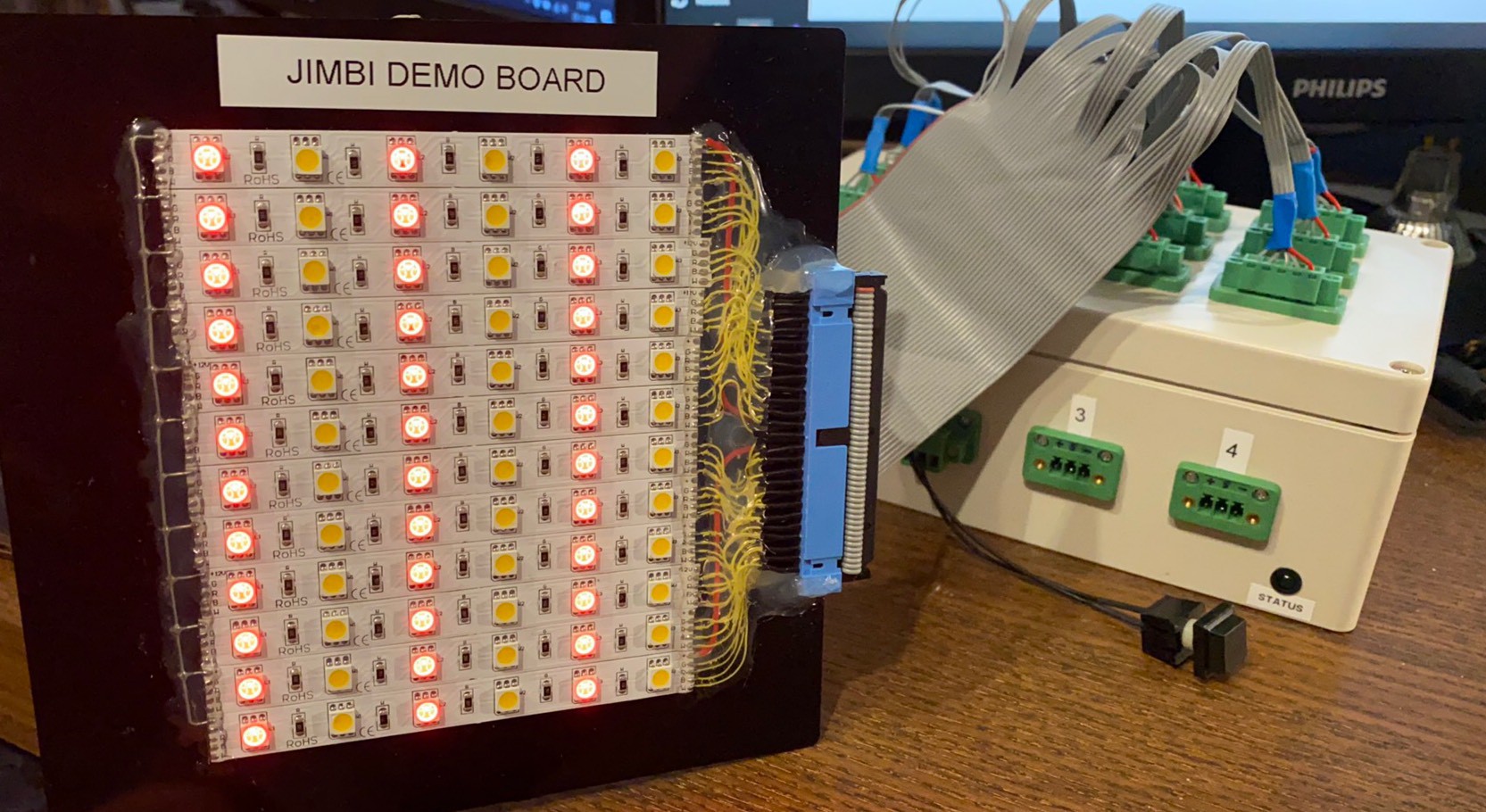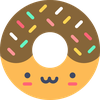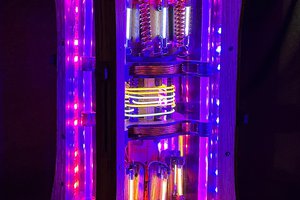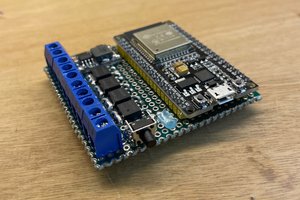#### What is it?
The Jimbi is a multi-function 48-channel LED strip controller. It can be used together with 12V common-anode LED strips.
With full color RGBW strips up to 12 channels can be connected to create amazing light experiences for your stairs or other objects.
The Jimbi provides 4 hardware inputs to connect switches or sensors which can trigger colors or patterns you can design yourself.
Furthermore the Jimbi provides full MQTT control through a wifi connection with your local network or as a standalone network if preferred.
#### Why did you make it?
Because it's fun to have something nobody else has! And if you have a great idea, why not bring it to life?
#### What makes it special?
The Jimbi provides an easy to use interface to control multiple channels of LED strips together.
You can build your own patterns on an interactive webpage and assign triggers to various trigger inputs.
With a wifi connection and a fully-featured MQTT protocol you are in control and can easily implement
this device into existing domotica systems like OpenHAB, Domotics or as a standalone application.
#### What about the hardware?
The Jimbi is based around the 48-channel PWM controller LT8500 from Analog Devices.
Each output can be switched to ground with the onboard FETs, which allows the control of 12V common-anode LED Strips.
A total of 4 edge sensitive trigger inputs are provided to trigger patterns or specific colours.
The inputs provide a 12V power source to supply power to any sort of external sensor or switch with a digital output.
A Cortex M3 is used to control all the low-level hardware including the LT8500 and
provides a gateway to the application layer which is controlled by an ESP8266.
The Jimbi can be connected to a local network or can run standalone.
It is powered with a 12Vdc power supply which requires up to 5A of current (internally fused)
depending on the amount of LED strips connected.
#### What about the software?
The ESP8266 takes care of all the configuration and pattern processing while
providing an easy to use web interace to configure, backup and restore all your settings.
Future updates are possible for both the Cortex M3 and the ESP8266 software by uploading firmware directly from the web interface.
The ESP8266 can be connected as a MQTT client to communicate with the outside world.
A pattern designer tool is available in the web interace to build your own smart patterns.
 Futience
Futience




 Timber Rough
Timber Rough
 Olek
Olek
 Dan Julio
Dan Julio
 Jerry Isdale
Jerry Isdale
For the piezo sensors I've used a simple opamp + comparator circuit to amplify the small signals. And the Jimbi itself filters multiple small pulses in software to prevent retriggers.